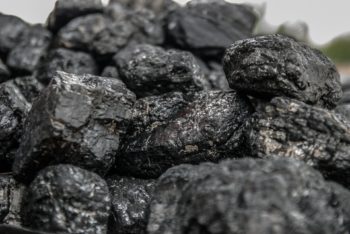
Actions taken by the Trump administration to cut the coal country’s regulatory burden have “provided optimism” to the industry, that has been in decline in recent years, analysts wrote.
“The mood in the coal industry in the United States brightened in 2017,” the International Energy Agency (IEA) reported in its latest global coal market report that makes projections for the next five years.
It’s definitely been a comeback year for coal. Exports surged nearly 70 percent in the first three-quarters of 2017, and mines are producing more than in 2016.
“Measures introduced by the Federal government provided optimism to the sector,” IEA reported. “Some regulations were reviewed and the financial environment for coal mining improved. The country’s first new coal mine since 2011 was opened in May and other projects were announced.”
Experts at Platts noted similar trends in 2017, finding “coal was generally the fuel of choice to meet incremental fossil fuel demand in the power sector outside of Europe in 2017.”
Trump’s deregulatory actions and “higher domestic gas prices drove higher coal use in the power sector and higher international coal prices boosted exports and revenues for coal companies,” IEA wrote.
Trump made lifting the regulatory burden on energy, coal, in particular, a promise on the campaign trail. Trump signed legislation shortly after taking office that repealed a former President Barack Obama-era mining rule. The president also issued an executive order rescinding a moratorium on federal coal leases.
The Environmental Protection Agency (EPA) has reviewed several regulations expected to hamper coal industry growth, but the biggest step the agency has taken in that regard was to rescind the Clean Power Plan (CPP).
EPA said repealing the CPP would cut $33 billion in compliance costs.
However, coal has an uphill battle ahead. Platts notes that “sluggish power demand, abundant gas supply, and renewables growth are expected to continue to generate headwinds for coal use,” meaning that U.S. “production is forecast to be around 510 Mtce in 2022, equivalent to current levels.”
U.S. coal exports will also have to increasingly compete with liquefied natural gas exports. Europe and Asia are hungry for U.S. LNG exports, and that could cut into coal’s market share, especially in country’s shunning coal.
IEA expects the U.S. to remain a “swing supplier to international coal markets,” and even though “changes in the policy and regulatory environment are reducing costs for US producers,” these “will not significantly change their position in the seaborne supply curve.”
The U.S. Energy Information Administration expects coal production to dip in 2018 on lower international demand and no growth in power generation, but the agency also sees coal production rising again in the latter half of the year.
Read more at Daily Caller

















Rakooi is still a windbag blowing off all that Hot Air Please save it for a realy cold night becuase winter starts on Thursday
I just read that some ANTIFA slugs admited their camped out near some railroad tracks in order to pour cement on the tracks and derail the train as part of a Anti-Fracking Campaign looks like their Earth first radicals as well just like Paul Watson(Named as a Hero of the Planet by that liberal rag TIME)Al Bore,Chris Manes(Author of GreenRage)Ed Abby and those wanks from Greenpeace and the Sea Shepards
The Way the TRUMP proposals are structured…the benefit to COAL is to the OWNERS not the employees.
WHY?
BECAUSE the money will go to mechanizing the mining…rather than employing many more employees. CHEAPER LONG TERM….rather than paying for all those Health Issues and mine disasters.
Killer COAL ELECTRIC GENERATION:
Profits still go to the BILLIONAIRE ENERGY MONOPLIES….
but the thousands of open air Earth-Lined
TOXIC pits & ponds & old mine shafts
are used to store, with out standards or supervision,
BILLIONS UPON BILLIONS of gallons of TOXIC COAL ASH !
Dumping Toxic Waste
Every year,
EACH OF the nation’s coal plants produces
140 million tons of coal ash pollution/yr.,
the toxic by-product that is left over after the coal is burned.
All that ash has to go somewhere,
so it’s dumped in the backyards of power plants across the nation
—into earth lined open-air pits & precarious surface-waste ponds.
Many/most of these sites lack any adequate safeguards,
leaving nearby communities at risk from potential
large-scale disasters like the massive coal ash spill in Tennessee in 2008,
&
from gradual yet equally dangerous contamination as coal ash toxins seep into
drinking water sources
or
are blown into nearby communities.
.
Coal ash pollution contains high levels of toxic heavy metals such as
arsenic,
lead,
selenium,
and other cancer-causing agents.
The public health hazards and environmental threats to nearby communities
from unsafe coal ash dumping have been known for many years,
including increased risk of cancer, learning disabilities,
neurological disorders, birth defects, reproductive failure, asthma (1 million new cases/yr.),
and other illnesses.
Coal ash is not subject to federal protections, and state laws
governing coal combustion waste disposal are weak or nonexistent.
The result:
Millions of tons of coal ash are being stored in ponds, landfills, and abandoned mines.
Many of these sites lack any/adequate safeguards, leaving nearby communities
at risk from potential large scale disasters like the December 22, 2008,
TVA disaster in Tennessee in which a EARTHEN dike holding back decades’ worth
of coal ash failed at the Kingston Fossil Plant,
flooding the surrounding residential area with more than one billion gallons of toxic coal ash
—enough to flood more than 3,000 acres one foot deep.
.
While dramatic events like the coal ash spills in Tennessee
garner national media attention, dangerous contaminants are
quietly seeping from coal ash dumps into groundwater supplies across the country
or blowing into the air of communities, exposing people and wildlife to toxic substances.
…data indicates
that at least 535 (nearly 2000 in 47 states by other estimates)
coal ash ponds KNOWN to operate without a simple liner to
prevent dangerous chemicals and heavy metals from reaching drinking water sources.
.
The Hazards of Coal Ash
Living near a wet coal ash storage pond is significantly more dangerous
than smoking a pack of cigarettes a day, according to a risk assessment done by the EPA.
The toxins found in coal ash have been linked to organ disease, cancer,
respiratory illness, neurological damage, and developmental problems.
.
People living within one mile of unlined coal ash ponds can have a 1 in 50 risk of cancer
—more than 2,000 times higher than what the EPA considers acceptable.
.
Coal ash contains arsenic, lead, mercury, and selenium, as well as aluminum, barium, boron, and chlorine.
All can be toxic.
Particularly where there is prolonged exposure,
these toxins can
cause cancer,
heart damage,
lung disease,
respiratory distress,
kidney disease,
reproductive problems,
gastrointestinal illness,
birth defects,
impaired bone growth in children, and behavioral problems.
.
In short, coal ash toxics have the potential to injure
all of the major organ systems in adults (including pregnant women) and children.
Exposure to toxic coal ash can lower birth rates, cause tissue disease, slow development,
and
even kill plants and animals, leading to changes in wildlife concentrations
and disruptions to entire ecosystems.
.
The toxic pollution from coal ash builds up in exposed animals and plants,
causing the pollution to make its way up the food chain when they are eaten.
Children are more susceptible to the health impacts of coal ash
—and according to the EPA,
1.54 million children live near coal ash storage sites.
Not only is coal ash toxic, it is also likely to grow increasingly dangerous.
.
Air pollution control technologies, like scrubbers, selective catalytic reduction,
and activated carbon injection, capture mercury and other hazardous air pollutants
and are able to stop increasing amounts of toxic pollution from
going up the smokestacks.
However, when those pollutants are captured they are shifted from the air to the coal ash.
.
Mercury and other pollutants that previously contributed to air pollution are now becoming solid wastes
—and when they leach into water, their toxicity is carried into the water as well.
Unfortunately, one toxic environmental problem is being traded for another.
Every industry improves itself with automation. The money saved doesn’t just go to the owners but also the consumers.
If all of the environmental problems listed as such a problem now, why were they not a problem before the climate change issue? Why is coal different than other mining operations such as iron or copper? When my grandmother was a little girl she fell into a stream by a copper mine and by the time she had gotten home her dress had fallen off of her.
You problem with coal is it emits more carbon dioxide per unit of energy than any other fossil fuel. That is the problem and your list is a bunch excuses.
If you’ll remember David this hot air balloon has acknowledged that he works for the wind industry.
Leonardo DiCaprio a enviromentalists hypotcrite opposes coal mining with the NRDC wackos Newsflash the RMS TITANIC WAS RUN ON COAL
We should encourage diverse fuel supplies. If everyone depends on natural gas then everyone will suffer, except the guys with natural gas to sell.